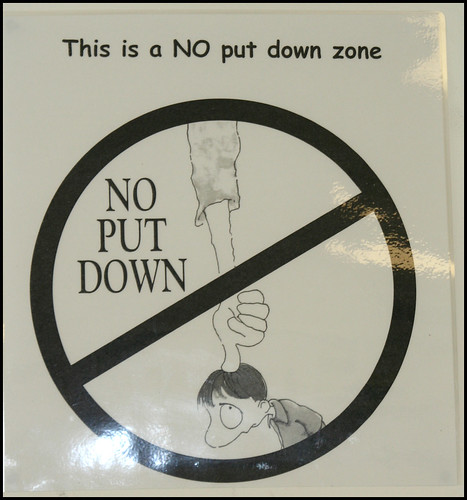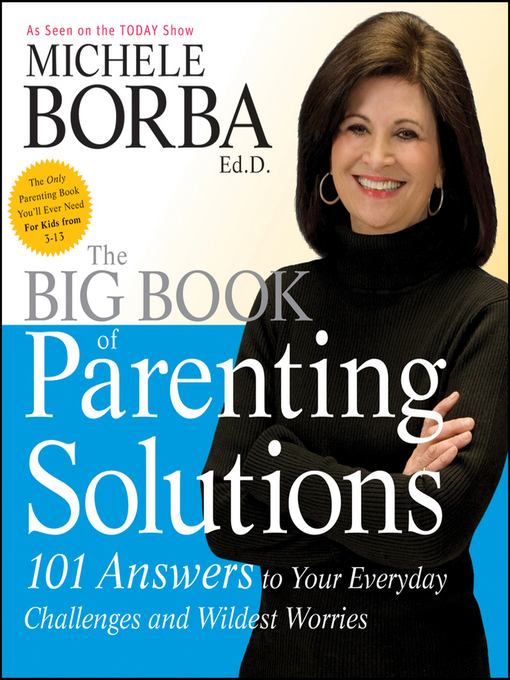Parenting advice to curb sibling rivalry with four house rules that defuse brotherly-and-sisterly bickering before it gets out of hand
 It’s the soundtrack to parenthood: the battles, the bickering, and oh the rivalries.
It’s the soundtrack to parenthood: the battles, the bickering, and oh the rivalries.
“Mom- she’s touching me!”
“He’s looking out my window!”
“Tell her to get out of my room!”
Even on the best of days these sibling squabbles can make you want to pull your hair out. Add in busy schedules and mounting stress and coming home to conflict and contention can just be too much to handle.
So what can you do when your living room more closely resembles a war zone rather than the relaxing retreat that it should be?
Though you can’t force siblings to be best friends, you can get a handle on their squabbles and create a (relatively) harmonious home.
As you probably know already, just saying ‘You kids stop your fighting!’ isn’t going to cut it. Kids respond to firm boundaries and clear cut directives. So what you have to do is lay out some non-negotiable rules and enforce them…period.
4 House Rules to Help a Sibling Cease-Fire
There are four simple house rules that will result in a (temporary, at least) cease-fire on all the fighting. The key to successful implementation: consistency, consistency, consistency! (Did I say consistency?) These are by no means the end-all solution to sibling battles and jealousy but these instating these four rules sure will reduce a big chunk.I’ll post other tips as well as parenting styles (i.e. yours) that help as well. For now, these four rules are core (and …if I may add…) they also are core to boosting R.E.S.P.E.C.T. in your home.
Rule 1. No yelling
Instate a ‘vow of yellibacy’ in your house and enforce it. When tempers flare and feelings are hurt, the volume decimal tends to rise, causing arguments to quickly escalate and get out of hand. Just remember: the ‘no yelling’ rule isn’t only for the kids, it goes for you too. Parents have to set the example for staying calm and collected when they are upset or angry as well.
This should be rule number one. All family members must use calm voices only—no yelling allowed. And if talks get heated, anyone can make a time-out hand sign hinting that he needs to cool down. When cooler heads prevail, arguments get resolved much more quickly and in a way that is less stressful for everyone. This one is best modeled. And if you don’t use it, forget it. Your kids will never use it.
Rule 2. No taking without asking
Property ownership can be a BIG deal to little ones, and the time honored “Mooom, she’s touching my stuff!” complaint can be frequent in multi-child households. This can be a particularly touchy issue for tweens and teens- especially if there is a younger sibling in the house. Older siblings can get pretty upset when their iPods and laptops are confiscated by tiny sticky (literally!) fingers.
Insist that permission of the owner must be granted before borrowing, using, or taking any property. Not only will this cut down on the conflict, but it will also make it easier to resolve any arguments that may come up. If permission was not asked for and granted, then you know who broke the rule. Simple as that.
Hint: It also may help to have clear designated “My drawer-Your drawer” or my shelf, my cupboard, my bed, my space, my side type dividers or my whatever… Just spell it out so all family members are clear.
Rule 3. No hurtful behaviors

With bullies and mean kids, running the schools, it’s important that you set the standard for you home to be a safe haven for your kids. It should be a place free from hurtful behaviors.
Set a strict policy: name-calling and hitting will not be tolerated, under and circumstances and they will result in a consequence. Tolerating hurtful behavior inside your home only encourages your kids to display it when you aren’t around as well- and that’s not a character trait any parent wants to encourage.
This rule should stand for each child in your home, no matter what age they are.
The consequences may differ according to the age group. For a younger child, a display of hurtful behavior will result in a time-out. If your child is older, then it means the loss of a privilege.
While hitting and hurtful words are sure to happen when it comes to siblings, it’s up to you to make them understand that you will not tolerate it under any circumstance.
Rule 4. No involvement without evidence
 If you are the parent of siblings, you’ve probably also spent a good deal of time playing referee. Kids are quick to run to a parent’s aid to help settle their disagreements and if you weren’t a witness to the incident itself, then it can be hard to know exactly what to do. So get involved in the conflict only if you actually saw or heard it occur. This will help to keep you neutral and will encourage your kids to adopt strategies to help them work things out for themselves.
If you are the parent of siblings, you’ve probably also spent a good deal of time playing referee. Kids are quick to run to a parent’s aid to help settle their disagreements and if you weren’t a witness to the incident itself, then it can be hard to know exactly what to do. So get involved in the conflict only if you actually saw or heard it occur. This will help to keep you neutral and will encourage your kids to adopt strategies to help them work things out for themselves.
If your kids seek your help, but you don’t have any evidence, then step away. Instead, suggest that they use Rock, Paper, Scissors to work out their problem. This prevents you from having to choose sides or take one kid’s word over another’s—and it will also teach them to work things out for themselves.
After all, you won’t always be there to help them resolve their problems, so it’s better that they acquire the skills at home so they are ready when the time comes.
Dr. Michele Borba, Parenting Expert

I am an educational psychologist, parenting expert, TODAY show contributor and author of 22 books.
You can also refer to my daily blog, Dr. Borba’s Reality Check for ongoing parenting solutions and late-breaking news about child development.
Follow me on twitter @MicheleBorba
You can also find dozens of research-based and practical tips about bullying (as well as 100 other topics) in my latest book,The Big Book of Parenting Solutions. Refer especially to the chapters on Sibling Rivalry, Insensitivity, Bullying.

